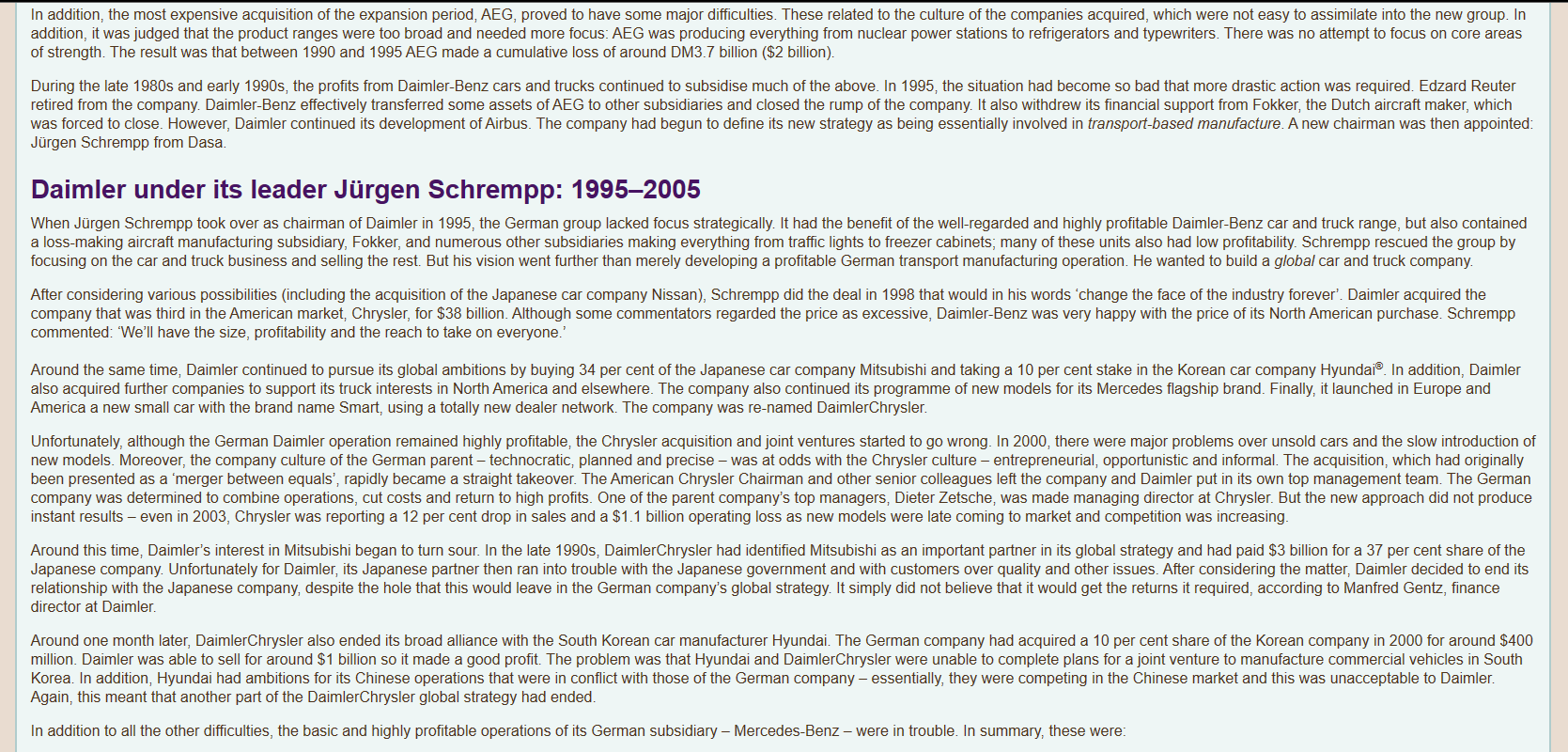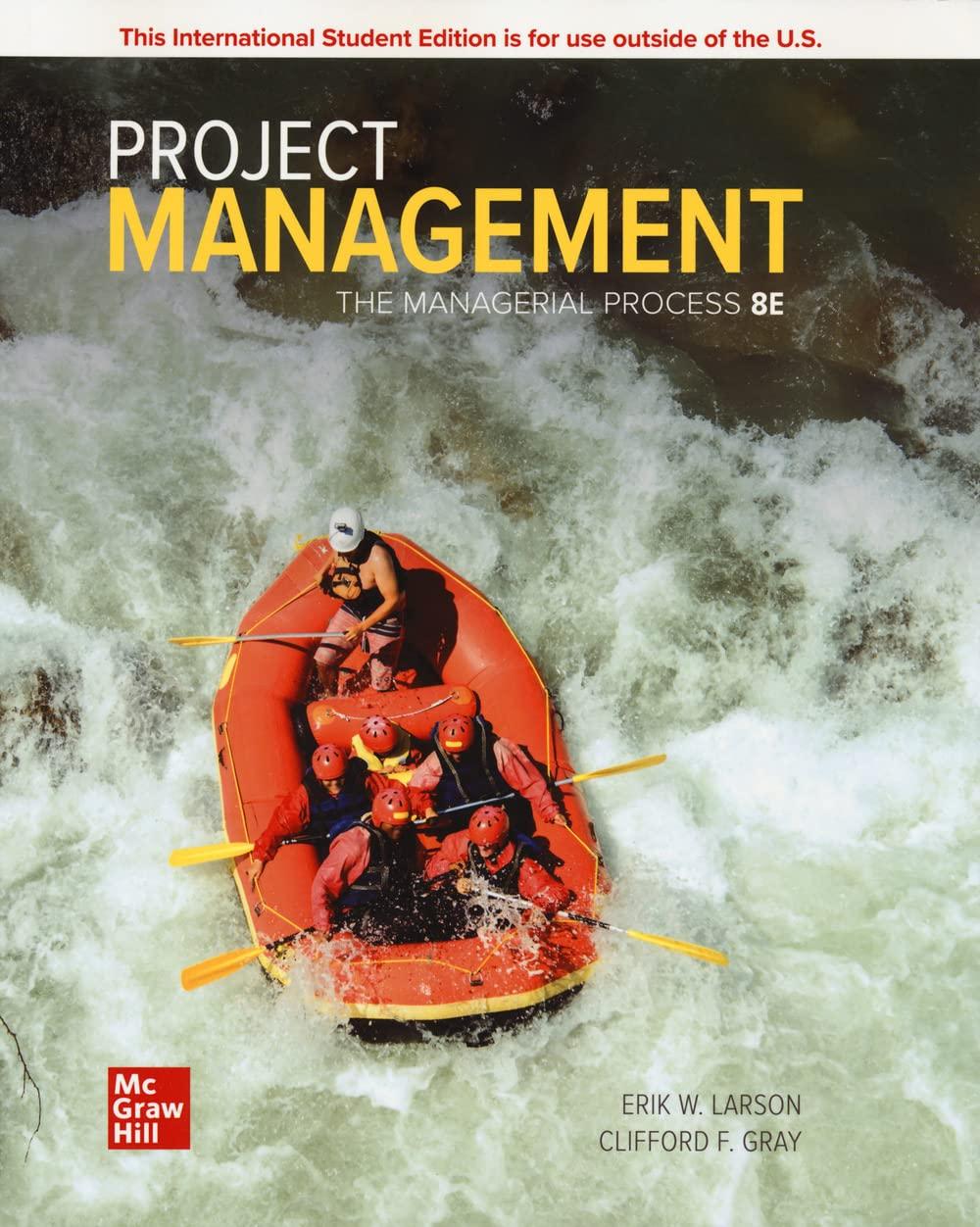



Daimler: how three leaders influenced strategy company. Zetsche then turned around the company before he retired in 2019. Daimler under Edzard Reuter: 1985-1995 business would be shared technology. - Aerospace and defence - Messerschmitt-Bolkow-Blohm , Dornier TM, Fokker TM as well as investing in Airbus. - Electrical engineering, electronics, rail engineering and domestic appliances - AEG. - Financial services and software - Debis . group by the centre. At the same time, each of these subsidiaries had its own product ranges to develop and sell: cars, aircraft, electronics, etc. Deutsche Aerospace TM, Jurgen Schrempp, was on public record 20 as describing the Daimler-Benz headquarters in Stuttgart as 'Bullshit castle'. During the period 1985-1995, there were several unforeseen events in the environment that made it difficult for the company: - German currency became even stronger, making Daimler's exports more expensive. - The mid-range aircraft market took a major downturn with the acquisition of Dornier being particularly expensive and ill-judged. of strength. The result was that between 1990 and 1995 AEG made a cumulative loss of around DM3.7 billion (\$2 billion). Jrgen Schrempp from Dasa. Daimler under its leader Jrgen Schrempp: 1995-2005 commented: 'We'll have the size, profitability and the reach to take on everyone.' America a new small car with the brand name Smart, using a totally new dealer network. The company was re-named DaimlerChrysler. instant results - even in 2003 , Chrysler was reporting a 12 per cent drop in sales and a $1.1 billion operating loss as new models were late coming to market and competition was increasing. director at Daimler. Again, this meant that another part of the DaimlerChrysler global strategy had ended. In addition to all the other difficulties, the basic and highly profitable operations of its German subsidiary - Mercedes-Benz - were in trouble. In summary, these were: In addition to all the other difficulties, the basic and highly profitable operations of its German subsidiary - Mercedes-Benz - were in trouble. In summary, these were: - German manufacturing costs were too high. - The new small Smart car was not meeting sales targets and was unprofitable. - Mercedes models, especially the E-class, were subject to significant quality problems. to receive the full backing of his executive board in spite of the difficulties that had arisen. Daimler under its leader Dieter Zetsche: 2005-2019 responsible for the supposed turnaround at the company's US Chrysler Division. Daimler again. [In later years, Chrysler then combined with the Italian car company Fiat, but this merger had no connection with Mr Zetsche.] would he bring to the company? Daimler has a strong policy on green strategy. More details at: https://www.daimler.com/sustainabilityl (c) Copyright Richard Lynch, 2021. All rights reserved. This case was written by Richard Lynch from published sources only. 21 Case questions 1. What were the three strategies of the leaders of Daimler? To what extent do each of the strategies fit with well-known strategy theories such as the competitive environment the resource-based view (Chapter 4), knowledge-based theories (Chapter 11) and theories about strategic management (Chapter 9)? 2. To what extent did the new strategies appear to derive primarily from the leader at the time? And to what extent were they justified by the strategic logic of the 3. Do powerful leaders make for powerful company strategy










